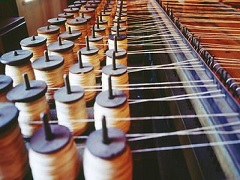
加科专注创新,根据您的需求,给您定制优质满意的行业解决方案
Textile industry is one of the fastest growing and most influential industries in the world. Similar to other industries, the transformation and upgrading of the textile industry is also facing many difficulties. At present, western developed countries have shifted from early labor-intensive industries to capital and technology intensive industries. The focus of the world textile industry is constantly shifting to Asia. China and India have accounted for nearly half of the world's total spindles, and an Asian cotton textile production center centered on China and India has been formed. In recent years, textile enterprises in Pakistan, Indonesia, Vietnam and other Southeast Asian countries, relying on their high labor quality and low labor cost advantages, have adopted the OEM development model, continuously improved their deep processing capacity and formed a large market scale. However, the backward technology makes most enterprises in these countries unable to change the current situation of backward technology and low productivity of the industry even if they have introduced advanced equipment from Europe and America. Digital and intelligent transformation is imperative. The rapid development of the industry has also brought environmental problems. The EU has ordered to prohibit the disposal of textile waste and asked Member States to recycle textiles from 2025. The textile industry is also gradually undergoing new changes. At present, it is characterized by intelligence, green and ubiquitous. Technology is emerging in the form of platform, agglomeration and integration. The integration of information technology, textile technology, material technology and environmental protection technology has accelerated the pace of technological innovation in the industry. The traditional low efficiency and high emission burners are naturally restricted, and the upgrading is also the trend.



The technological process of textile printing and dyeing includes: cotton cleaning, carding, combing, drawing, roving, spinning, winding, warping, sizing, warp threading, weaving, finishing, dyeing, printing, drying, baking, steaming, heat setting, etc. Among them, printing drying, baking, steaming, heat setting and other links need heat supply. According to many years of industry experience, the performance of the burner has an important impact on the presentation of product printing and dyeing effect. At the same time, high-temperature processes such as dry cloth, baking, steaming and heat setting will lead to the release of a large amount of waste gas, which seriously endangers human health and the surrounding environment. It is necessary to have requirements for the environmental protection performance of the burner.





